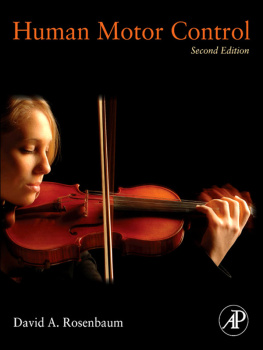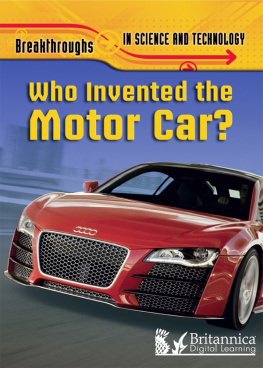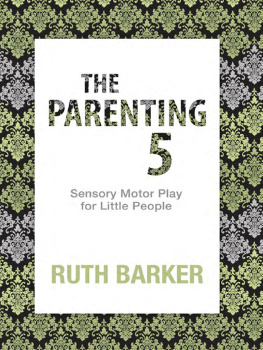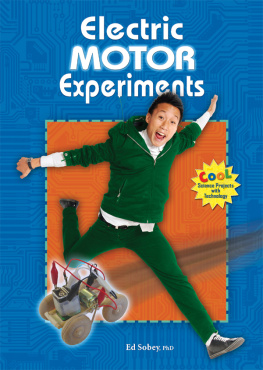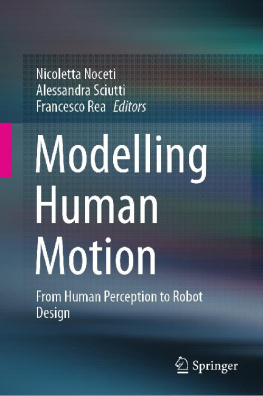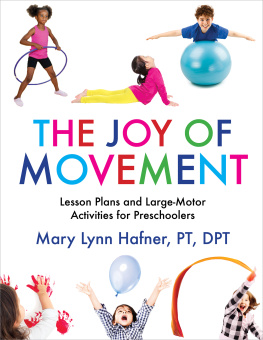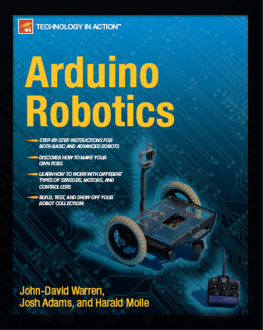David A. Rosenbaum
Copyright
30 Corporate Drive, Suite 400, Burlington, MA 01803, USA
525 B Street, Suite 1900, San Diego, California 92101-4495, USA
84 Theobalds Road, London WC1X 8RR, UK
No part of this publication may be reproduced or transmitted in any form or by any means, electronic or mechanical, including photocopying, recording, or any information storage and retrieval system, without permission in writing from the publisher. Details on how to seek permission, further information about the Publishers permissions policies and our arrangements with organizations such as the Copyright Clearance Center and the Copyright Licensing Agency, can be found at our website: www.elsevier.com/permissions.
This book and the individual contributions contained in it are protected under copyright by the Publisher (other than as may be noted herein).
Notices
Knowledge and best practice in this field are constantly changing. As new research and experience broaden our understanding, changes in research methods, professional practices, or medical treatment may become necessary.
Practitioners and researchers must always rely on their own experience and knowledge in evaluating and using any information, methods, compounds, or experiments described herein. In using such information or methods they should be mindful of their own safety and the safety of others, including parties for whom they have a professional responsibility.
To the fullest extent of the law, neither the Publisher nor the authors, contributors, or editors, assume any liability for any injury and/or damage to persons or property as a matter of products liability, negligence or otherwise, or from any use or operation of any methods, products, instructions, or ideas contained in the material herein.
Library of Congress Cataloging-in-Publication Data
Application submitted
British Library Cataloguing-in-Publication Data
A catalogue record for this book is available from the British Library.
ISBN: 978-0-12-374226-1
For information on all Academic Press publications visit our Web site at www.elsevierdirect.com
Printed in the United States of America
10 11 12 9 8 7 6 5 4 3 2 1

Preface
Think of all the things you did to look at this page. If you are in a bookshop, you had to enter the shop, walk down the aisles, locate the section of the bookstore that had this volume, find this book on the shelf, reach for it without yanking off other volumes, open the book, use your fingers to get to this page, and use your eyes to get to this point. For all these activities to occur, you had to draw on your knowledge of the world to make decisions about what to do, and you had to use your brain, muscles, and limbs to carry out the movements needed to bring you to your present position. How all these events came together is the subject of this book. So too are the things that make it possible to do other everyday tasks such as opening soda cans, writing notes, and singing love songs.
Motor control underlies all the activities we engage in: breathing, remaining upright if we wish, walking, reaching for objects, talking, and text messaging, to name a few. We have a vested interest in understanding how we control the motion and stability of our bodies. Many of the technologies we use and the skills we develop are embodied in the capacity to move or hold still. If we can understand how human motor control works, we can design safer workplaces, better tools, smarter robots, and more effective methods for teaching skills to others. Also, we can rehabilitate, cure, or possibly even prevent motorically expressed medical disorders.
The fact that this is the second edition of Human Motor Control means that the first edition was successful enough to warrant a second airing but not complete enough to stand on its own forever. The first edition was indeed successful, or at least as successful as a book on this topic can be. One reason for its success was that it conveyed the fun, excitement, and challenges of the many approaches that contribute to the field of human motor control. The second edition is meant to do the same. The many advances in the field call for an update.
As was true of the first edition of Human Motor Control, the second edition focuses on four core problems that lie at the heart of the field:
- 1. How are movements selected to achieve particular tasks when, as is almost always the case, infinitely many movements will achieve them (the degrees of freedom problem)?
- 2. How are behaviors sequenced in time (the sequencing and timing problem)?
- 3. How are perception and motor control combined (the perceptual-motor integration problem)?
- 4. How are perceptual-motor skills acquired (the learning problem)?
Throughout this book, these four problems will be at the heart of all that is discussed.
The organization of the second edition is similar to the organization of the book in its first incarnation. Part I, Preliminaries, sets the stage for the problems and approaches to be followed. Part II, The Activity Systems, focuses on the major functional systems that we depend on: Walking, Speaking, Smiling, and so on. The last part of the book, Part III, Future Directions, looks to new, exciting avenues of study, including new forms of therapy, the creation of closer ties between motor control and psychiatry, advances in genetics, new theoretical advances, and new methods for this area of study.
A great many advances have been made since the first edition appeared. Some of them are worth signaling in advance:
- 1. Schizophrenia and other psychiatric problems may be rooted in malfunctions of basic perceptual-motor circuits.
- 2. When physical actions are prepared, there is priming for the perceptual consequences that follow. This explains why, among other things, we cant tickle ourselves.
- 3. Our ability to understand what others say or do relies on internal modeling of the others intentional state.
- 4. Robots can perform much more adroitly and with much less energy consumption than was true in the 1980s and early 1990s.
- 5. Advances in computational models of motor control have enabled simulated actorssometimes called avatars or simulacrato perform in ways that are much more like human performance than was possible before.
- 6. Neuroscientists have opened the black box of the brain, and have shed new light on neural circuits underlying action, attention, perception, and learning. Such advances have been made possible through a variety of methods that were only beginning to be developed in the early 1990s, most notably, functional magnetic resonance imaging (fMRI) and transmagnetic stimulation (TMS).
- 7. Major advances have been made in genetics, and these have provided new insights into the genetic bases of many motorically expressed abilities and disabilities.
Along with these developments have been others, too numerous to mention in this Preface. Suffice it to say, they will be presented in the text.
A minor change in the format of the second edition is to consolidate all the reference lists in one grand end-of-book References section. This avoids redundancy and highlights the fact that though the various topics in this book can be considered separately, all of them, ultimately, belong together.
Writing a second edition of a book affords an author the chance to atone for sins of commission and omission. The first edition had errors of both kinds. All the errors of which the author is aware have been rectified and new errors are, hopefully, few in number.

